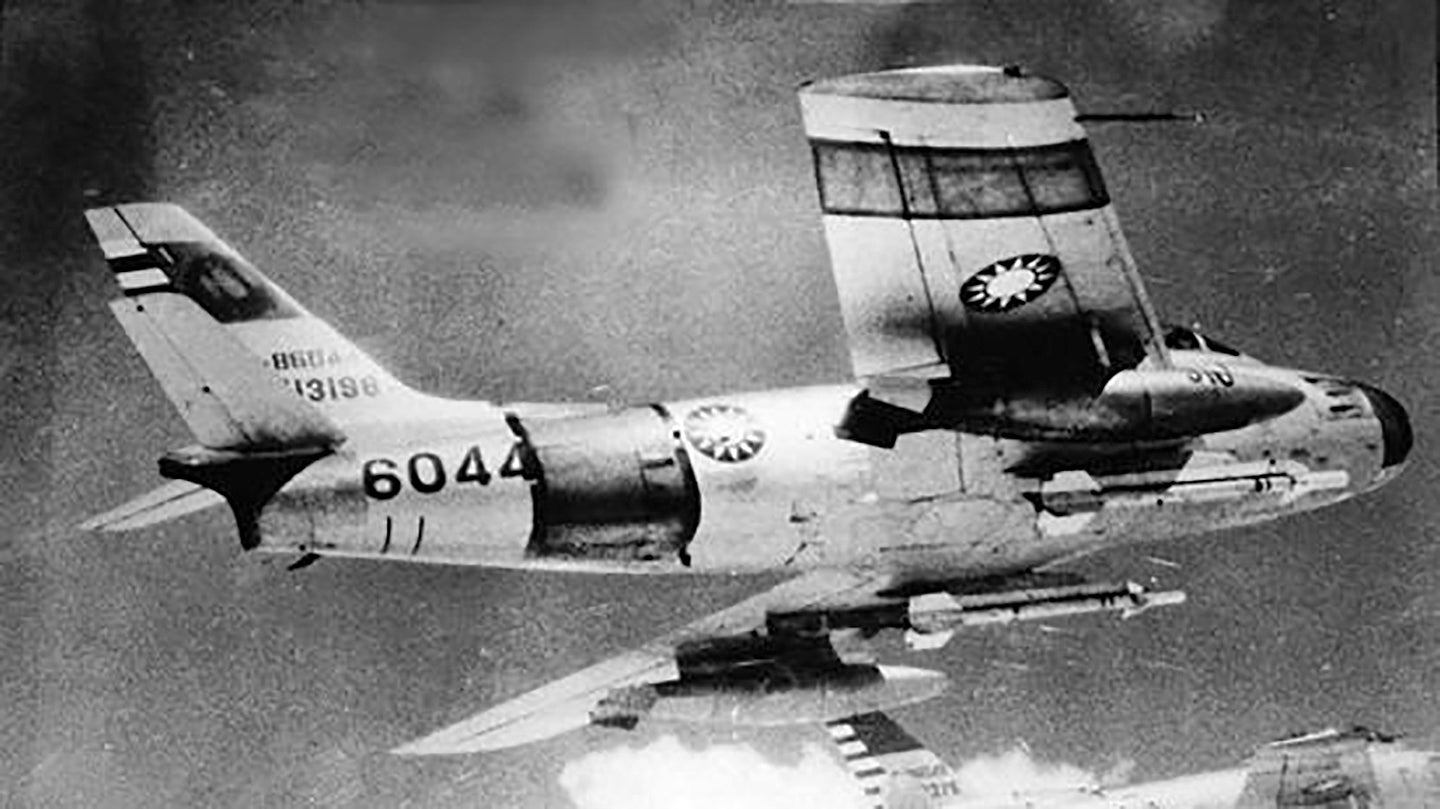It’s no exaggeration to say that the appearance of the heat-seeking Sidewinder air-to-air missile transformed aerial warfare forever. The now-ubiquitous AIM-9 is still the short-range weapon of choice for most Western air arms, but how it came to be first proven in combat is less well known. It was over the Taiwan Strait, a region at least as tense in the 1950s as it is today, that the missile scored the first of its many kills, in dramatic clashes between Taiwanese and Communist Chinese jet fighters.
Taiwan’s Republic of China Air Force (ROCAF) obtained its first Sidewinders in 1958, at the height of the Second Taiwan Strait Crisis, becoming the first foreign country to get its hands on them.
As for the fascinating origin story of the Sidewinder in the early 1950s, that’s something that The War Zone has explored in the past, and you can read about it here. There’s no doubt that, from its modest beginnings, the missile — named after the heat-seeking rattlesnake of the Mojave Desert — quickly exceeded the expectations of its developers at the Naval Ordnance Test Station in China Lake, California.
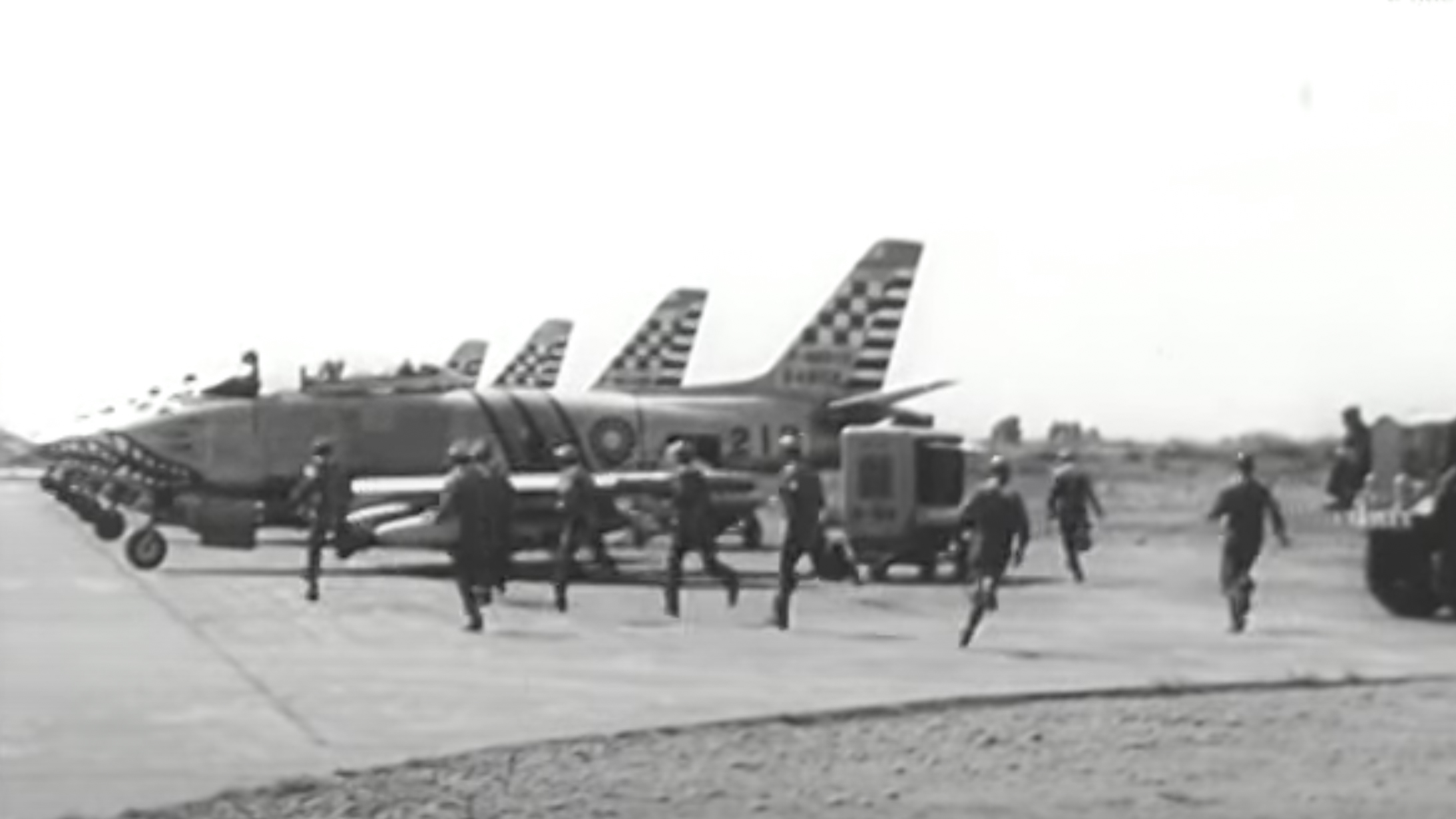
What was unusual about the Sidewinder program was the fact it stressed simplicity over sophistication and was pioneered by a small team of Navy engineers rather than one of the big aerospace companies. The key was putting the seeker head in the missile itself, rather than trying to integrate it with a complex and bulky fire-control system on the aircraft launching it. The result was the first truly practical “fire and forget“ air-to-air missile.
By 1953, infrared seeker heads had shown that they could track all manner of heat sources — trucks, trains, even glowing cigarettes — before proving their worth by blowing up unmanned B-17 Flying Fortress bombers and other aircraft that were converted into target drones.

Low-rate production of the Sidewinder followed in 1955, initially under the Navy designation AAM-N-7. It wasn’t until the revised tri-service system was introduced in 1963 that the Sidewinder became the AIM-9, the designation that it uses to this day.
In the summer of 1958, the mounting tensions over the Taiwan Strait provided a first opportunity for the Sidewinder to be tested in combat.

By this stage, the battle lines of the Taiwan confrontation had been established, with the People’s Republic of China (PRC) building up its forces on the mainland, while the Nationalists, forced out of the mainland, held out on Taiwan. At this time, the government in Taiwan was still widely recognized as the legitimate government of China, including within the United Nations, the country enjoying a status that has since notably diminished. Then as now, Taiwan was a recipient of U.S. military assistance, including the supply of combat aircraft, including F-86F Sabre jet fighters
As well as Taiwan itself, the Nationalists occupied a pair of strategically located offshore islands, Quemoy, and Matsu, which were close enough to the mainland to serve as positions from which to bombard the PRC with artillery. In turn, the PRC attacked these islands, prompting the deployment of U.S. Navy aircraft carriers to the region in 1954.

As of 1958, the PRC was still building up its forces adjacent to Taiwan, while the U.S. Navy’s Seventh Fleet patrolled the waters in the area. In July, a ROCAF F-86 was downed by a flight of People’s Liberation Army (PLA) MiG jet fighters. A month later, ROCAF reconnaissance flights revealed an increased deployment of PLA MiGs on airfields within reach of Taiwan. The aircraft comprised the first-generation MiG-15bis, the improved MiG-17F, and ultimately also the J-5, a Chinese-built version of the MiG-17.
The situation escalated throughout the month of August, with the PLA launching an artillery bombardment of Quemoy, while ROCAF F-86s clashed with PLA MiGs over the Strait. A first MiG fell to the guns of a Nationalists Sabre on August 14. By the end of the month, the PRC was threatening an invasion of Taiwan.
As well as the Nationalist forces, which included three wings of F-86s, there were four U.S. Navy carriers in the region by the end of August, while U.S. Air Force F-100 Super Sabres, a generation more advanced than the F-86s, was temporarily deployed to Ching Chuan Kang Air Base in Taiwan. Later in the year, U.S. Air Force F-104 Starfighters would be deployed to Taiwan, too, also armed with Sidewinders.

As the ROCAF stepped up patrols over the Strait, the clashes with PLA MiGs intensified. But the Soviet-made MiG-17 jets had an edge over the F-86s, with a higher service ceiling and higher maximum speed, and included an afterburner for extra thrust on demand. The result was that the Nationalist jets frequently failed to get within gun range of the Communist fighters.
In response, the United States rushed the delivery of Sidewinder missiles to the Nationalists in August. With the weapon only just issued to the U.S. Navy, providing it to Taiwan so soon was a surprising move, seemingly driven by alarm at the appearance of the MiG-17, specifically. Modifying the Sabres to carry the missiles was not overly complex and was carried out under an operation apparently codenamed Black Magic.
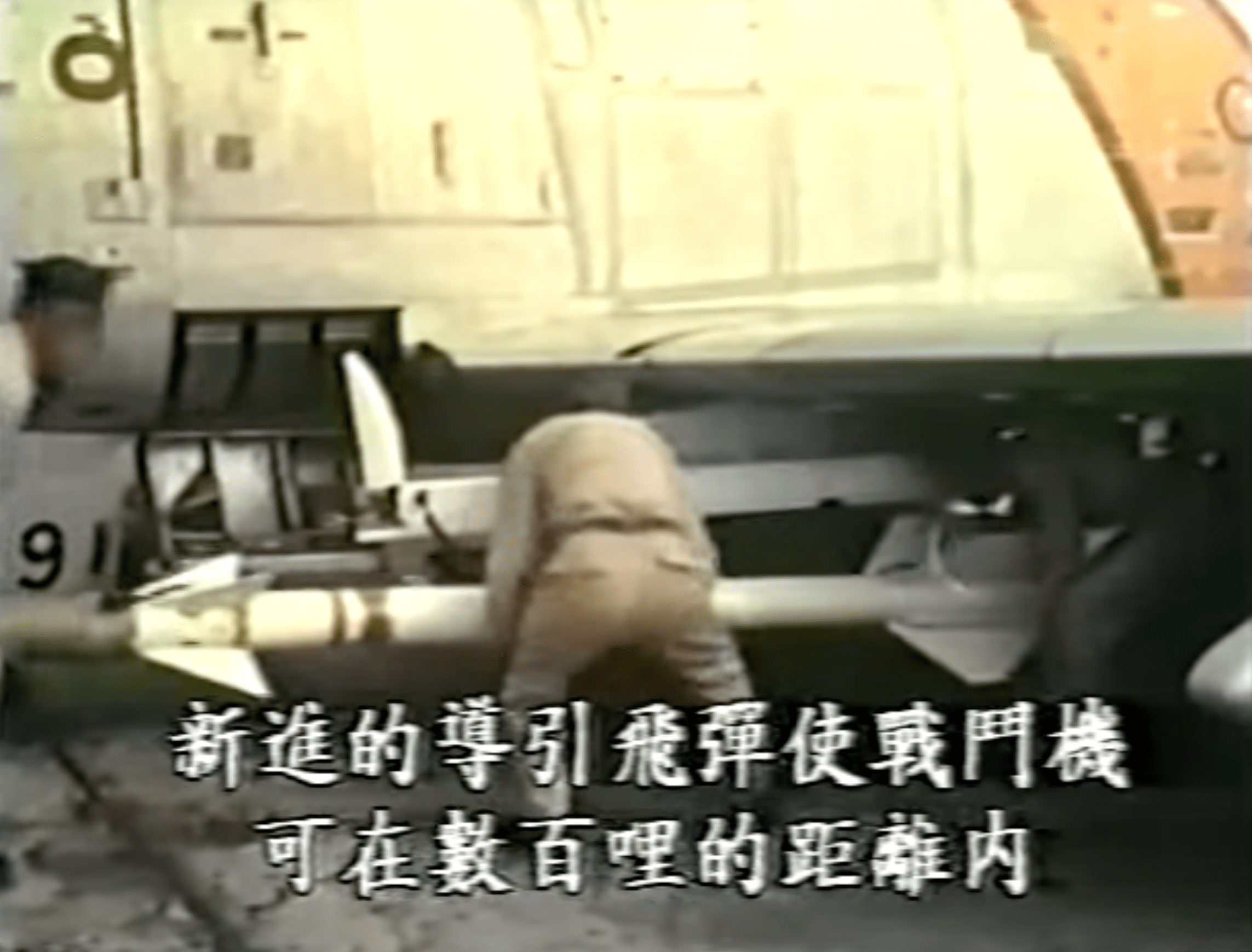
There are accounts, too, suggesting that the ROCAF pilots practiced missile engagements by flying mock dogfights against U.S. Air Force F-100s replicating MiG-17s during dissimilar air combat training.
The particular weapons supplied appear to have been AAM-N-7 Sidewinder IA missiles, which were the first version to be mass-produced, following the limited-production AAM-N-7 Sidewinder I, only around 200 of which were produced. After 1963, these two variants became the AIM-9A and AIM-9B, respectively. The Sidewinder IA had a maximum range of around three miles and was armed with a 10-pound blast-fragmentation warhead that provided an effective kill radius of approximately 30 feet.
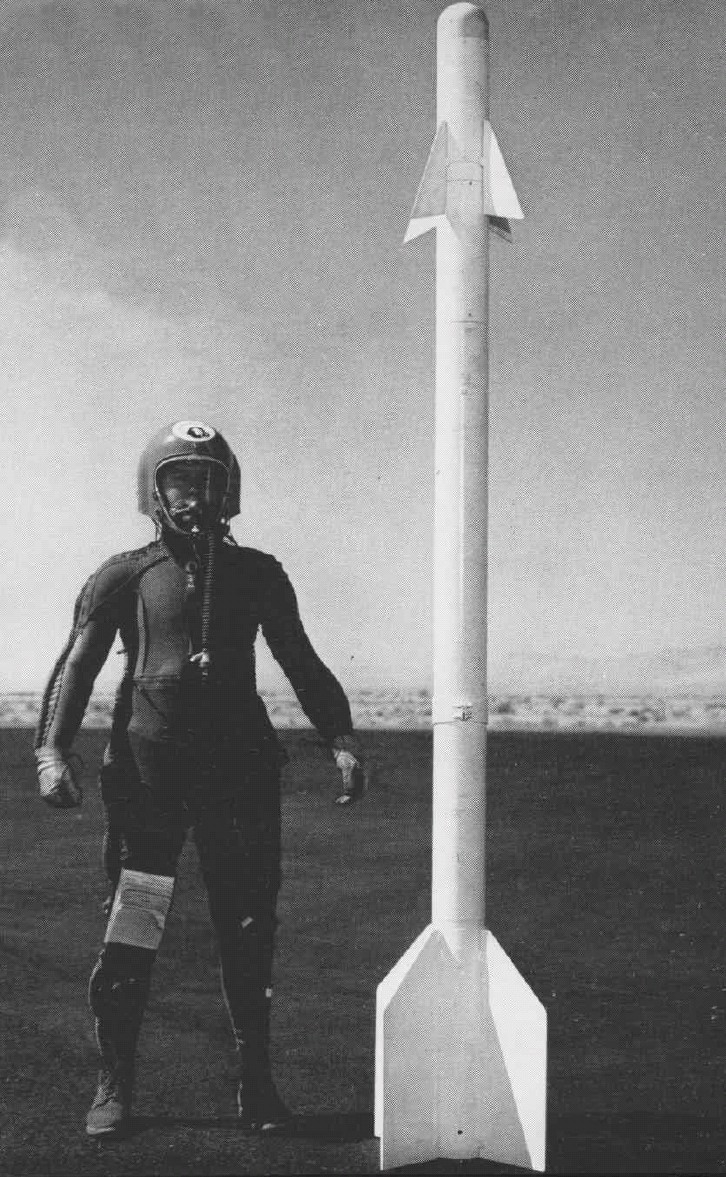
A first successful Sidewinder engagement occurred on September 24, 1958, apparently over Quemoy, with accounts indicating that three more missile kills were achieved before the end of the day. In all, 10 MiGs were reported destroyed by ROCAF Sabres, the remainder being gun kills.
According to accounts published in the West, 31 MiGs were shot down by ROCAF F-86s over a six-week period during the 1958 crisis, for the loss of two F-86s in return. This was part of a frantic pace of operations, in which the Nationalists flew between 100 and 200 sorties each day, with a similar number being flown on the PLA side.

Reports in the West suggest that the Nationalist pilots achieved a 60 percent kill rate using the Sidewinder over the Taiwan Strait. While they certainly had the element of surprise in their favor, that rate does seem high, particularly considering that more advanced models of the missile struggled to reach a 10 percent kill rate when employed by the U.S. Air Force over Vietnam.
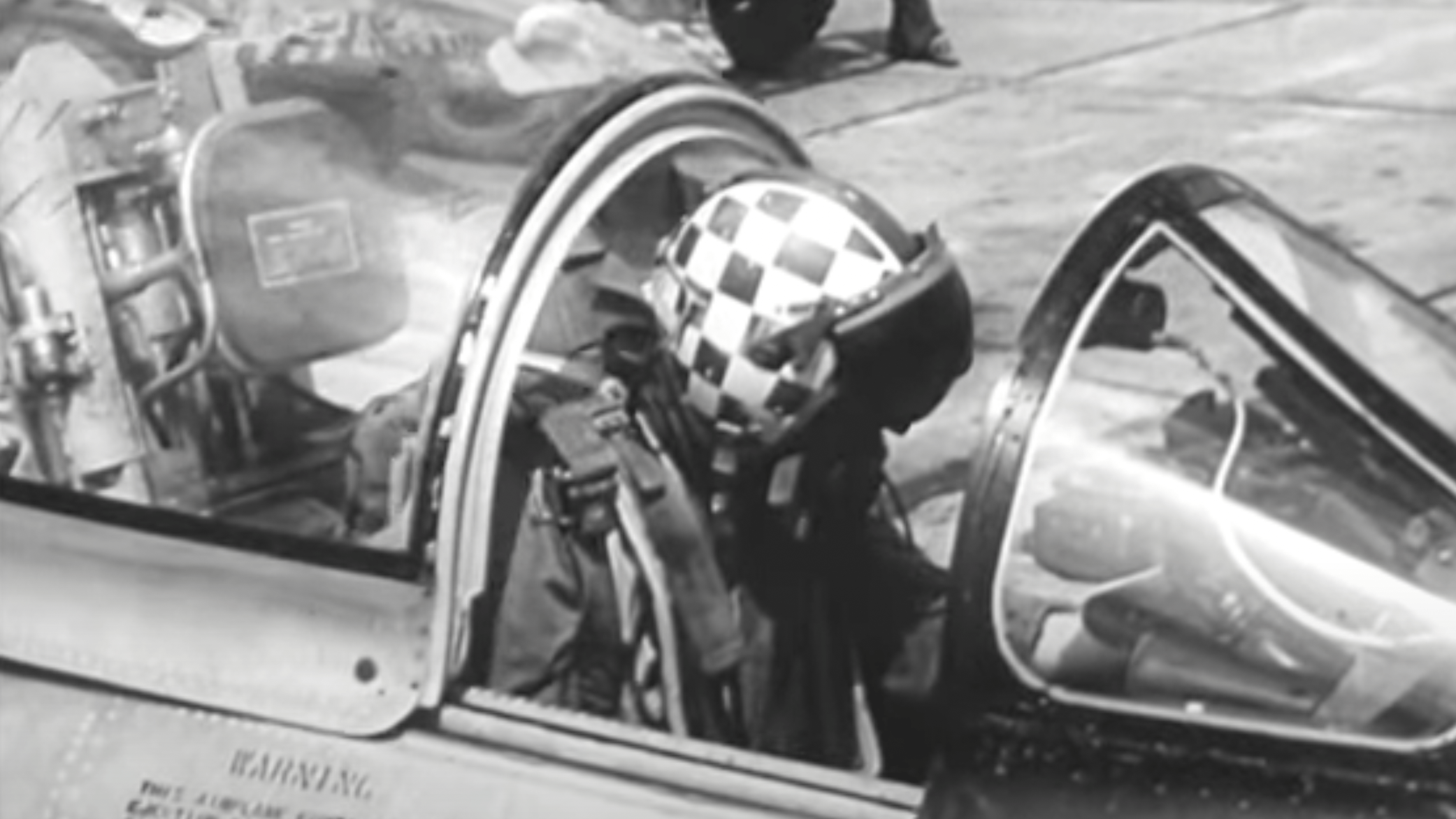
Overall, the appearance of the Sidewinder had been a surprise for the PRC and for observers in general. There was a lucky windfall for the Communists, however, with at least one missile hitting a MiG-17, but not detonating. The jet returned to base where the missile wreckage was removed and later studied. That resulted in the reverse-engineered Vympel K-13 (AA-2 Atoll) in the Soviet Union and the license-built PL-2 equivalent in the PRC. Both these weapons had serious shortcomings in terms of capabilities, as did the early-generation Sidewinders, but they similarly provided a springboard toward much more practical designs.
As for the Sidewinder’s role in the conclusion of the Taiwan Crisis in 1958, while it may have been a contributing factor, it was by no means the only one. The United States showed its commitment to Taiwan by resupplying Nationalist garrisons on both Quemoy and Matsu, helping to bring PRC bombardment to an end, although sporadic shelling would carry on for years to come.

The Sidewinder’s combat debut showed that the heat-seeking air-to-air missile was a viable proposition and, what’s more, it was even able to allow a lesser fighter to turn the tables on a better-performing adversary.
The missile was far from perfect, however, especially in its initial iteration. Its range was short, and the limited reliability of its seeker head required clear skies with no distractions if it were to remain locked on a target’s exhaust. Only tail-chase engagements against non-maneuvering aircraft were possible, and the target was able to maneuver its way out of danger if alerted in time to the threat.
The Taiwan Crisis of 1958 was just the first chapter in the Sidewinder’s combat history, and it would continue to be developed in the decades to come, as it continued to score victories in conflicts from Vietnam to the Falklands, and Desert Storm. Today, the AIM-9X Sidewinder is almost unrecognizable in its advanced abilities compared to its early progenitors. But the surprise appearance of this innovative weapon over the Taiwan Strait 63 years ago this month set the foundations for an unsurpassed career, one in which the latest iterations of the Sidewinder family remain the primary short-range missile armament of most Western fighters to this day.
Update, September 29: Twitter user @alert5 has provided additional details about the combat of September 24, 1958, based on a Chinese-language report. This puts the location of the first Sidewinder shoot-down as Wenzhou Bay, PRC, rather than over Quemoy, a distance of around 120 miles away. The four F-86Fs had been flying top cover for an RF-84F reconnaissance jet. A gun-camera image of the action shows the missile streaking away from the F-86 before engaging the MiG-17, the contrails of which can be seen. The same account puts the number of MiG kills that day at nine, not 10, although only four fell to the new missiles, six of which were fired.
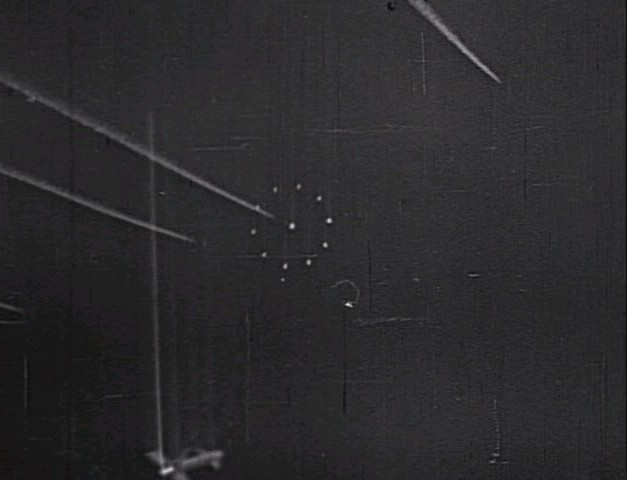
Contact the author: thomas@thedrive.com
